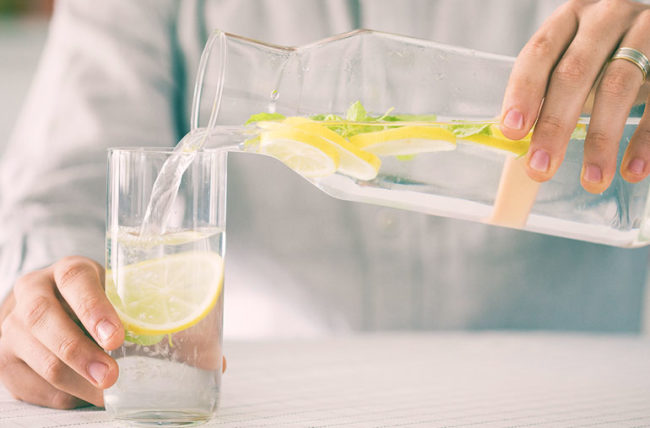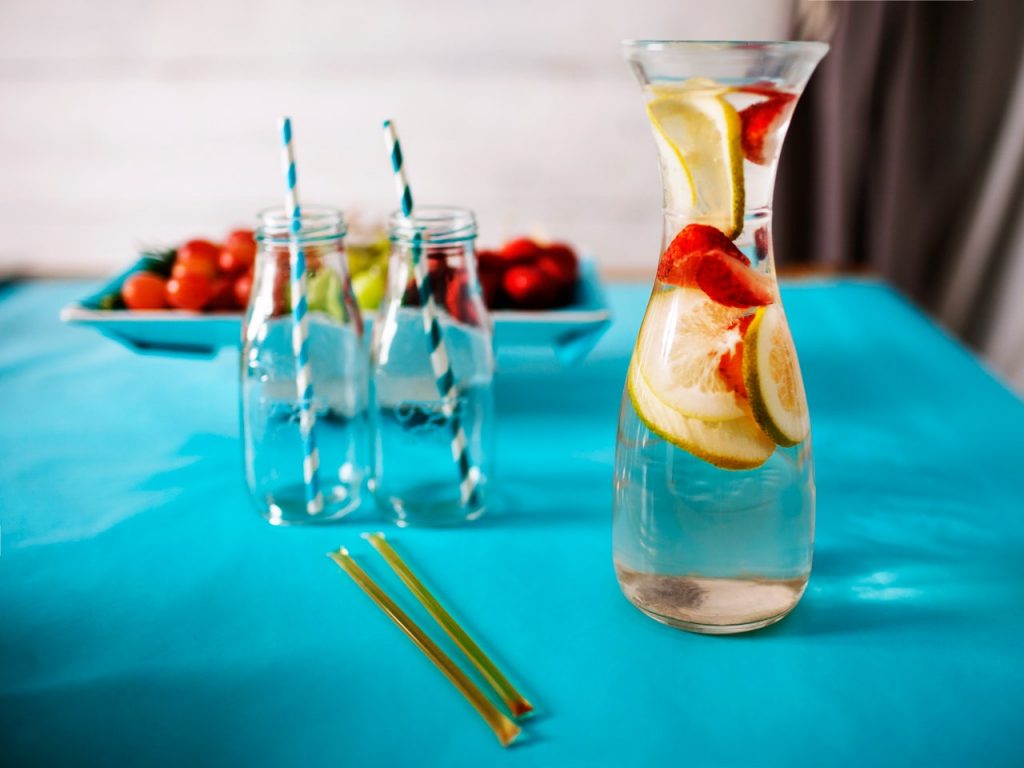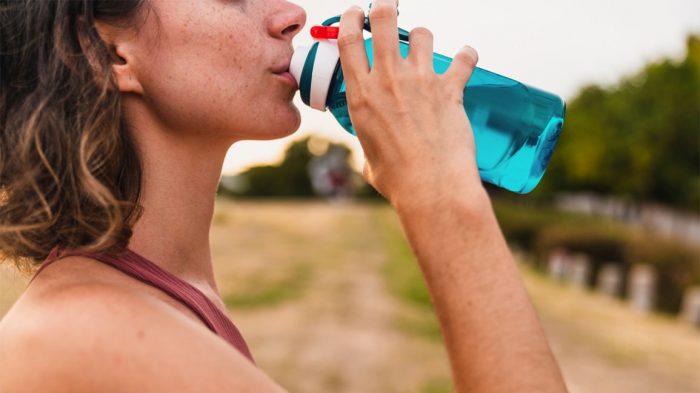It is important to get an adequate amount of fluids daily to be in good health. Dehydration can cause headaches, lethargy, muscle weakness, and a host of other health problems. So what is adequate hydration, and how do we meet these needs through drinking and eating? Here are some tips:

Increase the amount of daily fluid intake
Drink a lot of fluids such as water, juice, or milk with every meal. You should drink at least 1 – 8 0 cups of water a day but aim to drink 10 – 12 cups if you are more active to replace fluids that are burning due to sweating.
Drink fluids before feeling thirsty
Feeling thirsty is a sign that your body is already dehydrated! Watch your urine color as it is an indicator to see if you are drinking enough water. The urine should be a pale yellow color. If you notice a dark yellowish color, you may need to increase your fluid intake.
Avoid caffeine
If you drink caffeinated beverages such as coffee, tea, and soda, we recommend that you drink alternative decaffeinated beverages throughout the day. Caffeinated drinks are diuretics that increase the removal of water from the body instead of hydration.
Add fruits and vegetables to the water

Try zero-calorie, fruit-flavored water to add some variety. You can add lemon slices and mint leaves to water, or fresh, fruit slices. This way, you will also get vitamins.
Diluted juices
Fruit and vegetable juices may taste strong or sweet, as juices contain extra calories. Try diluting it with water.
Drink water
Most of your fluid needs are met through water and other beverages. However, you can get some fluids through the foods you eat as well. For example, broth-based soups and foods high in water such as celery, tomatoes, or watermelon can contribute to fluid intake.
Carry a water bottle with you
This is a great way to stay hydrated, especially when doing outdoor activities or running errands in the warmer months. Carry a water bottle that you can refill.




![The Top & Most Popular Seafood Bucket Restaurants in Dubai for you [Never Miss]](https://uae24x7.com/wp-content/uploads/2020/09/8-seafood-in-a-bucket-scaled-e1600739237403.jpg)
![Procedures for Renewing the Driving License in Abu Dhabi [3 Simple Steps]](https://uae24x7.com/wp-content/uploads/2020/07/Capture-9-e1595666454466.jpg)





